Dalibor Vesely: Shared Horizons
– Biba Dow
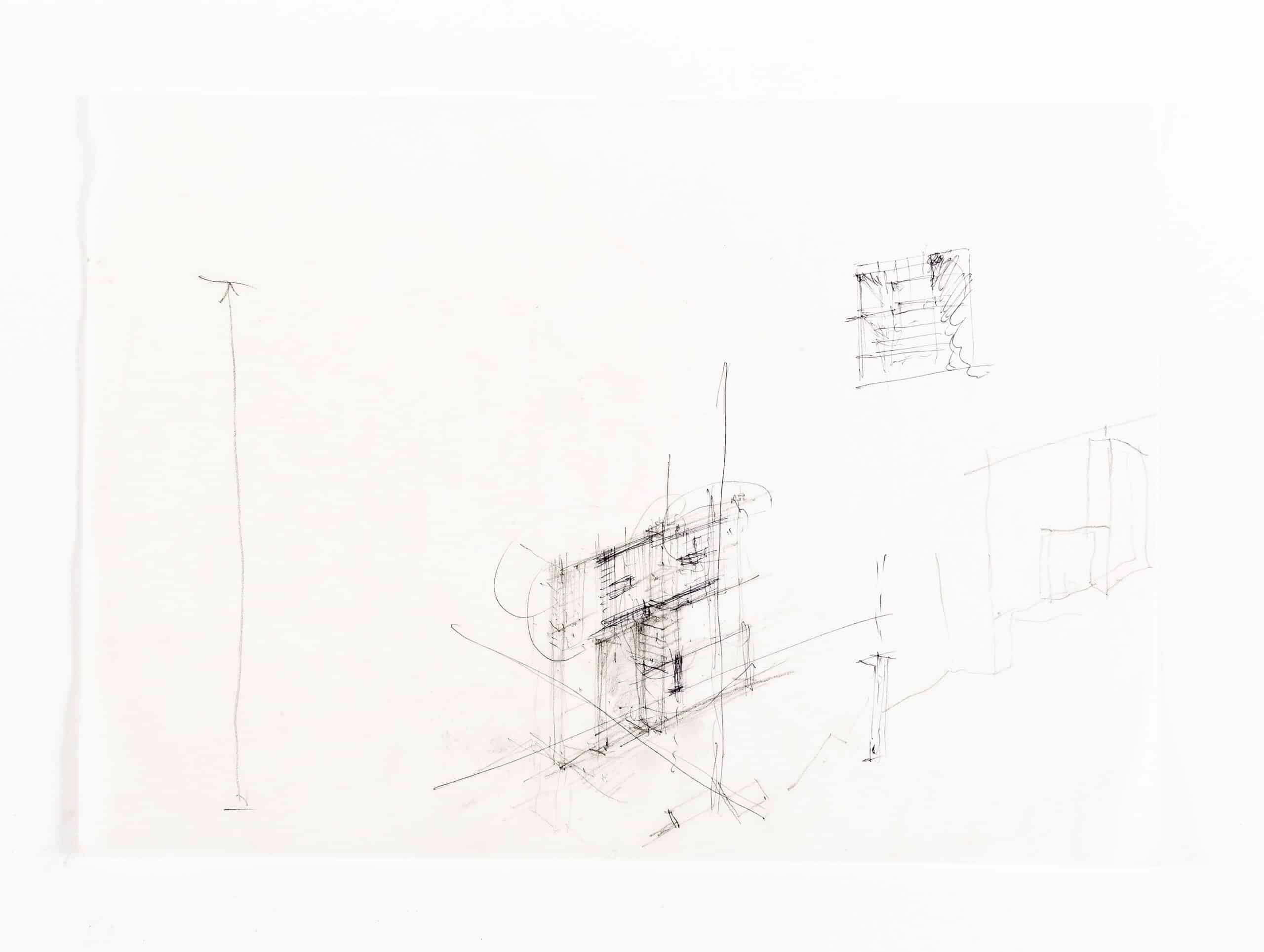
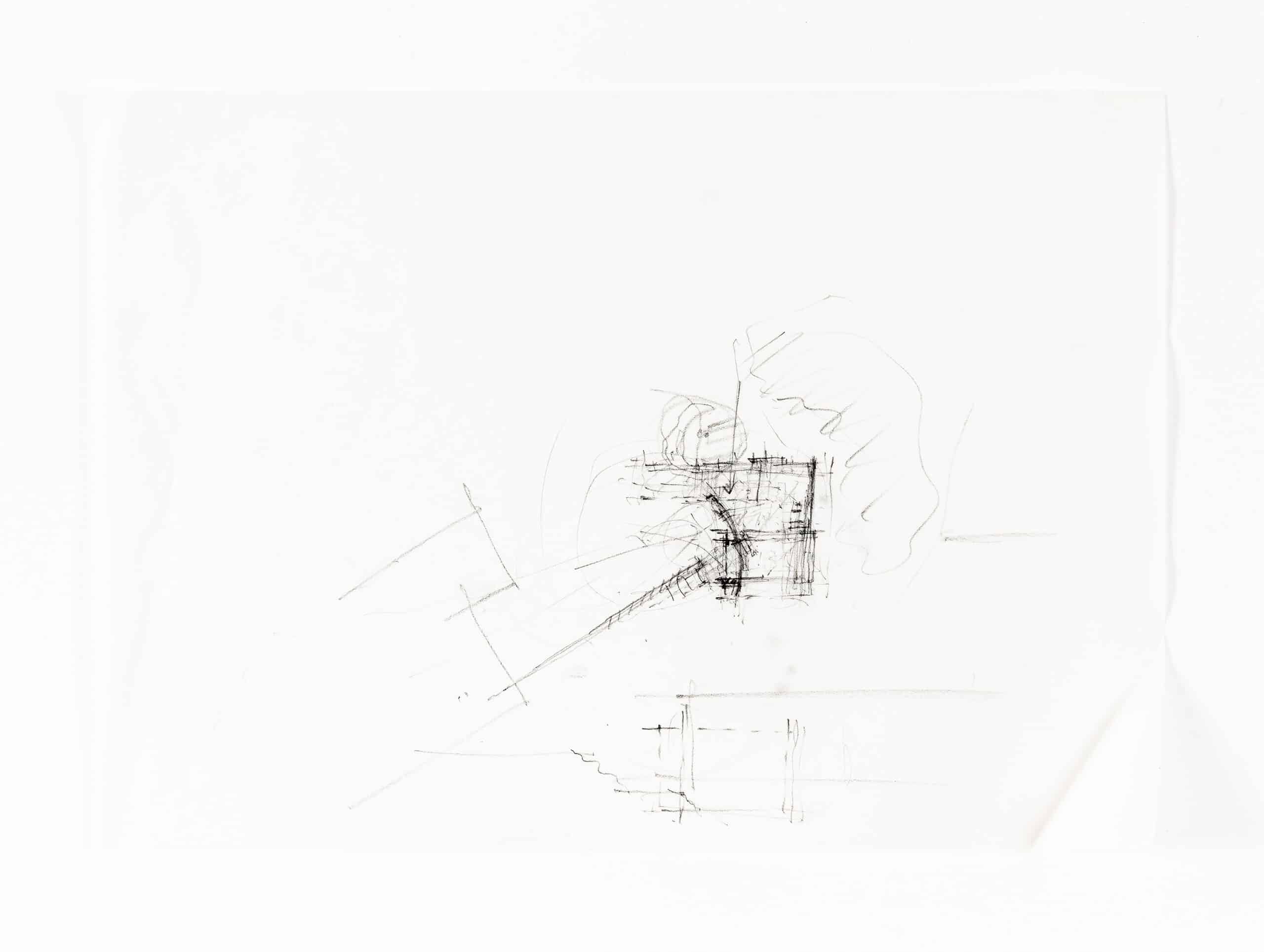
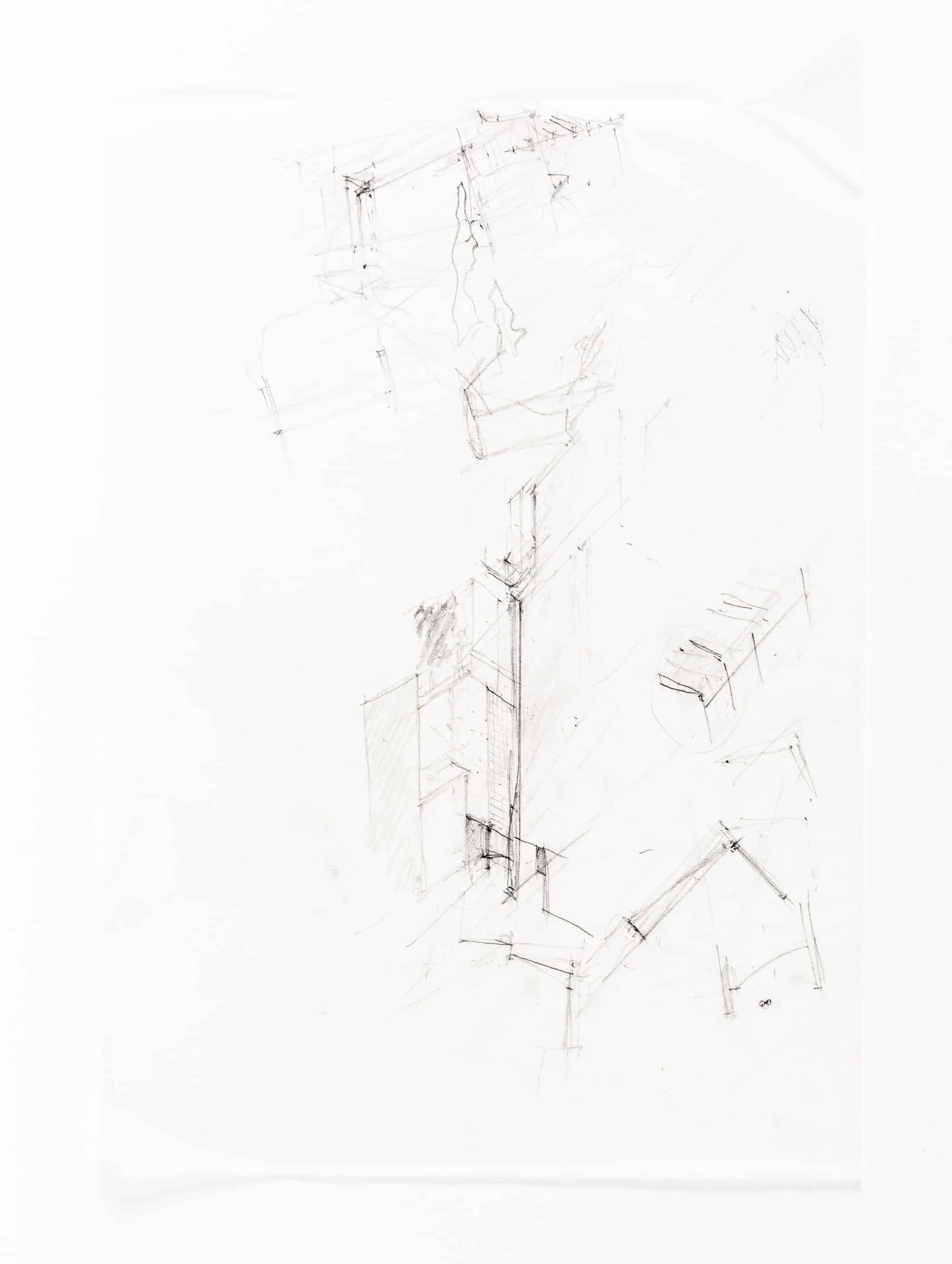
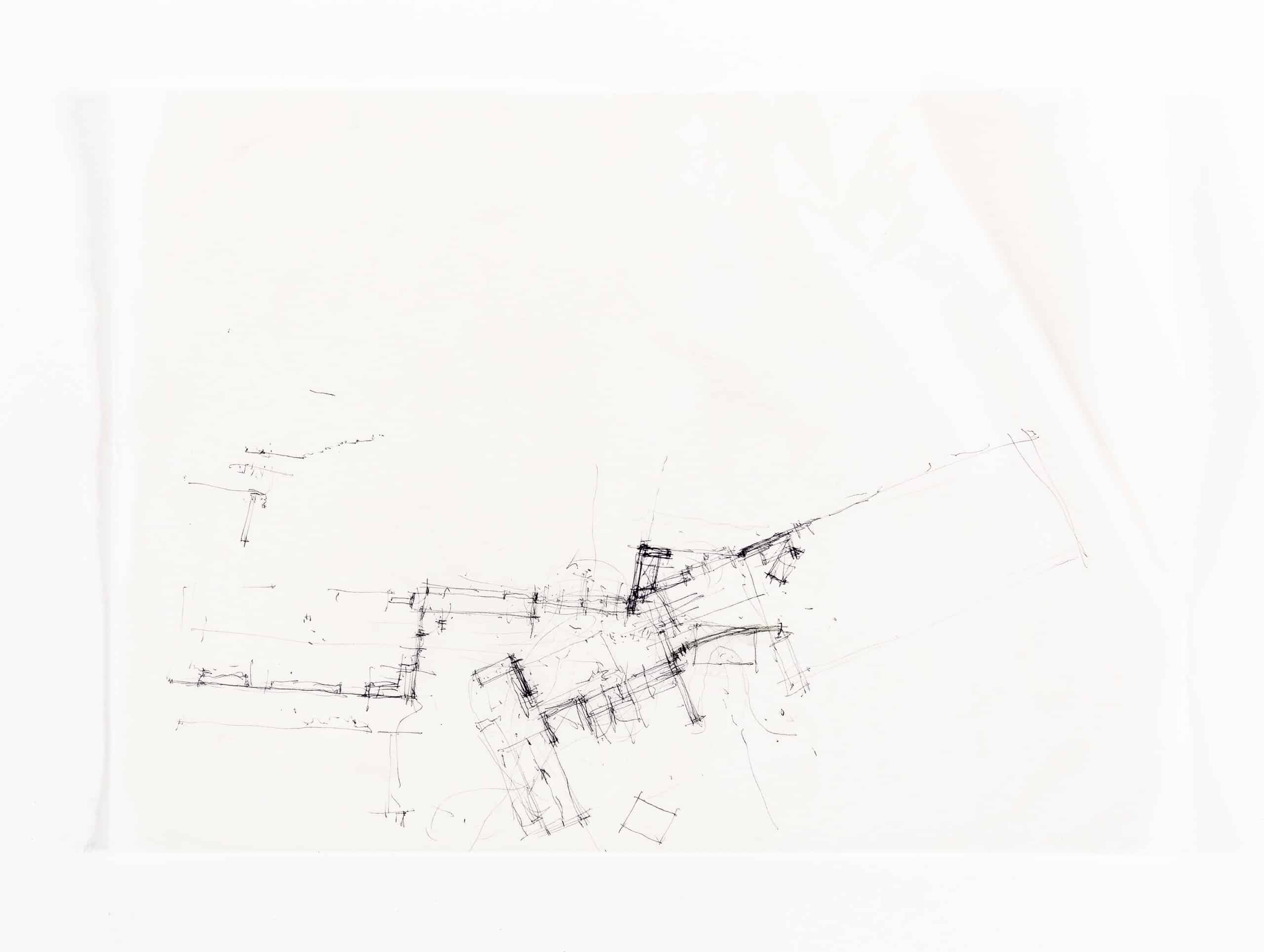
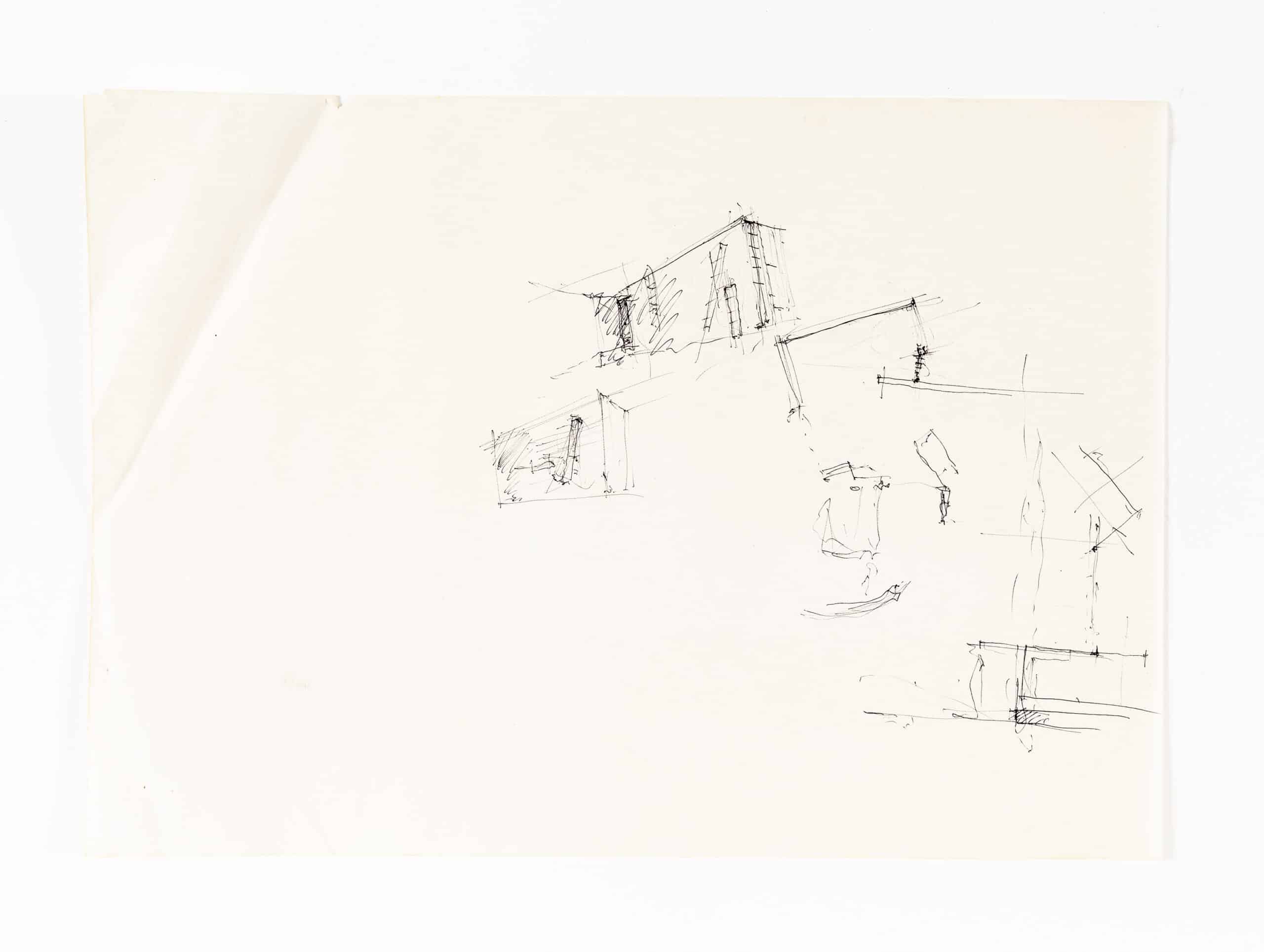

Looking at these drawings takes me instantly back to 1993. I am sitting next to Dalibor Vesely at my desk in Scroope Terrace in Cambridge. He is talking quietly and drawing on a stack of tracing paper which he has brought with him. He draws with a light hand in black Bic biro, making very fine marks. We are talking about my fifth year project, and he re-draws parts of it, exploring corners and fragments of building. The conversation ranges over books, philosophical ideas, poetry, ancient buildings, contemporary buildings, other students’ work: architecture in its broadest sense.
Our project was set in Prague, the city where Dalibor grew up. We visited in the Autumn of 1992, not long after the Velvet Revolution ended Communist rule. There was an atmosphere of re-discovery within the city as it explored its new democratic state, and a palpable excitement in Dalibor at his country’s newfound freedom. His father welcomed us into his flat where we drank plum brandy surrounded by his canvases and paintings. I remember them laughing and laughing.
Dalibor set us infill sites, the residue of second world war bomb damage, which we surveyed in our week there. We worked as a group to make buildings in an urban site, repairing the city through buildings. He taught us to make an explicit connection between the city as a collective experience, and buildings as representations of culture. We developed briefs that were embedded in culture and politics, shaping a piece of city with the understanding that architecture has the capacity to represent a public discourse.
Under Dalibor’s guidance, my building for a political club explored ideas of
collective spaces and interiority, situating both private and public experiences as a reciprocal exchange. His drawings describe moments of interaction. There is a corner in a public space that draws together three neighbouring buildings around a garden; spatially it forms part of my foyer and contains a pool of water that will reflect evening light as the interior life of my building begins. There is a drawing of the club library, a tall space where book stacks form building and enclosure dissolves to provide glimpses over and perspective on the outside world. There is a semi underground theatre space, a place of darkness and shadows, reflecting back the underside of political interaction to the city.
The architecture Dalibor evoked as he drew and talked encouraged us to believe that our buildings embodied meaning and created shared spaces; he referred to Merleau-Ponty’s description of space as a ‘horizon of all our experiences’. In his book Architecture in the Age of Divided Representation, Dalibor wrote that the ‘unifying power that architecture retains even today can be discovered again in the design process, where we find it possible to relate abstract ideas and conceptual structures to the concrete situations of everyday life. It is a part of our task to extend personal experience into the more public domain of shared reality, where it is possible to communicate not only between different levels of reality but also between different areas of culture. The aim is to create a continuum of relations, reciprocities, and comprehensive communication that can succinctly be described as a “communicative space”’.
When I wondered about how this related to the life in practice I was hoping to embark on, I felt confused. The Royal Academy of Arts had recently held its first architecture exhibition for forty years, displaying the work of Foster, Rogers and Stirling. It celebrated a largely self-referential approach to urbanism and building, which I struggled to reconcile with any idea of architecture as cultural exchange. As Alun and I established our practice together a few years later, it took me time to realise how fundamental was our understanding of a shared horizon of public experience to the language of making we were beginning to articulate. Over the last twenty years, we have watched the focus of architecture becoming increasingly commercialised and internalised. The majority of urban buildings have been designed more with a view to maximising financial returns than to making a lasting and generous contribution to the city. The result of this has been the erosion of our public spaces, losing opportunities for the shared experiences and connections which animate public life – a public life which the pandemic has reminded us to treasure. Our shared spaces have never been more important. Looking at Dalibor’s drawings again, I am conscious that they conjure up in my mind not only my project but those around it and the spaces in between, and I feel very grateful that that my education taught me that architecture is a public art.
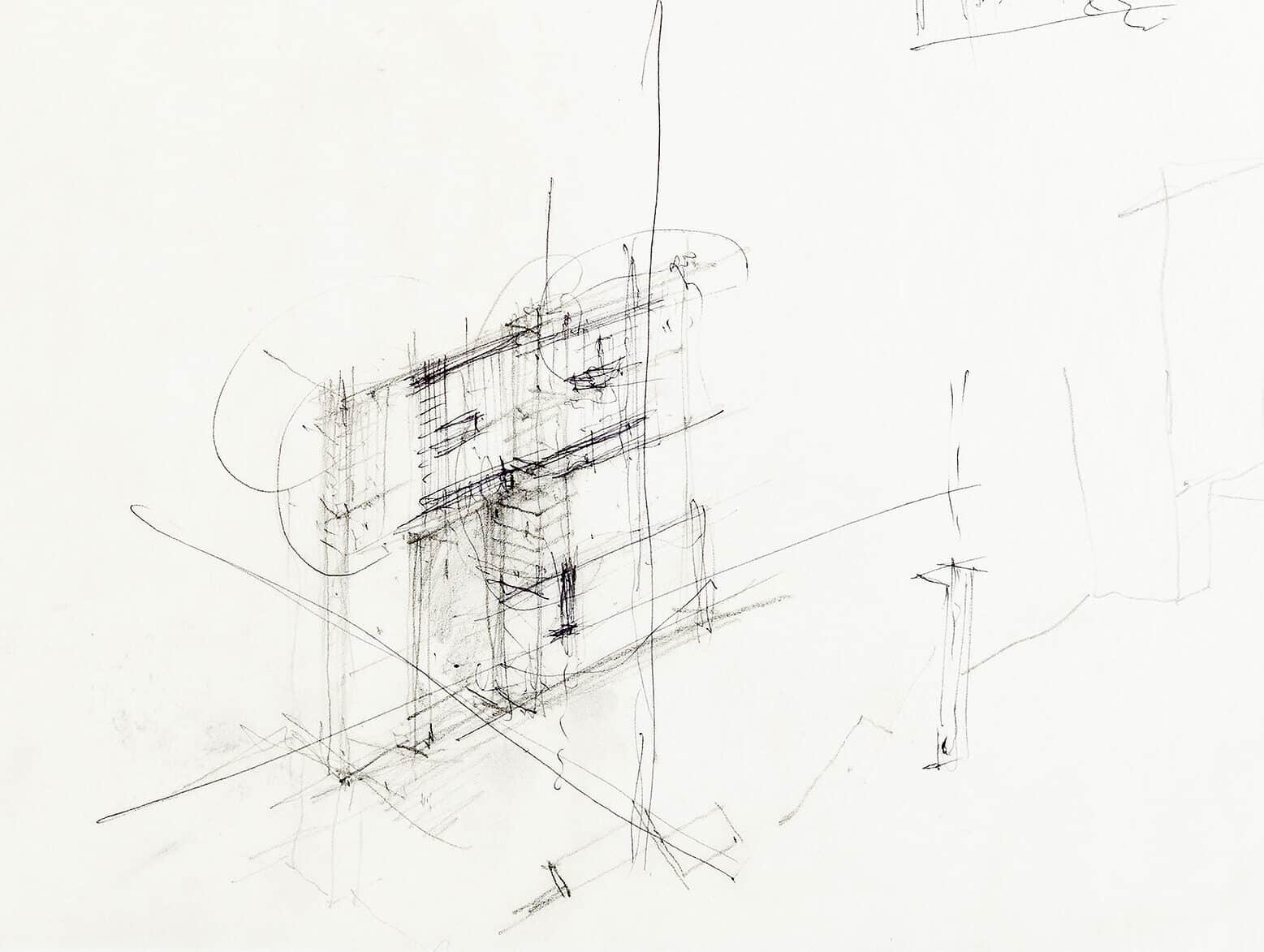
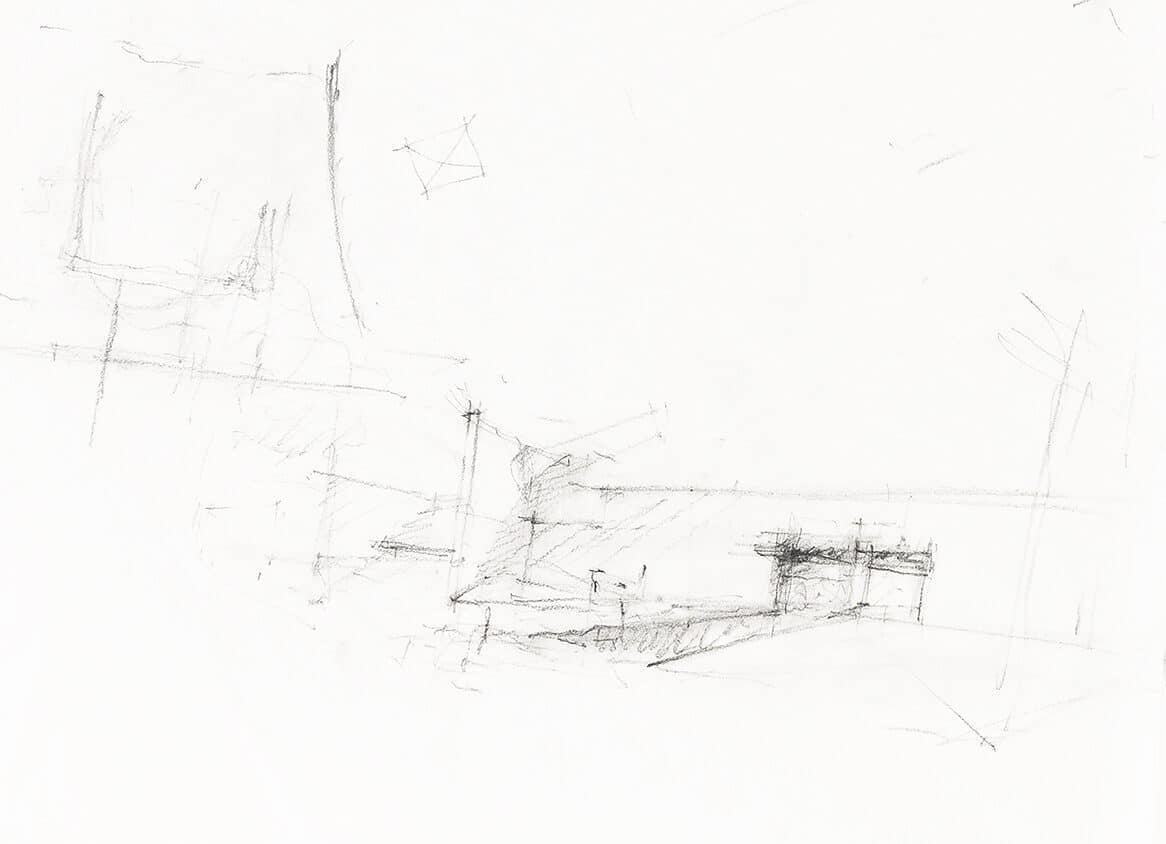
Biba Dow wrote this text for Drawing Matter to mark her generous gift of Dalibor Vesely’s drawings to the collection at Shatwell.
